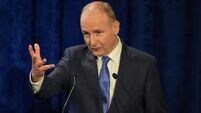Strong US data backs rate rise case

The US Commerce Department said yesterday that GDP rose at a 3.9% annual pace in the April-June quarter, up from the 3.7% pace reported last month.
The data supports the case that the US economy may be gaining enough strength to withstand an increase in benchmark interest rates from record low levels, despite growing concerns about the global economy.
Stronger consumer spending and a smaller inventory build are also a good sign for growth in the third quarter, although economists are expecting a cooler pace of growth overall.
The US Federal Reserve last week held off on hiking rates, but Federal Reserve chairwoman Janet Yellen kept the door open to an increase this year in a speech on Thursday night, as long as inflation remains stable and growth is strong enough to boost employment.
“There are a lot of things to like about the domestic side of the economy for the second half of the year, despite all the global malaise,” said Jacob Oubina, senior economist at RBC Capital Markets in New York.
“If the domestic economy holds in there, [Fed policymakers] are going to hike in December.”
The figures, which beat expectations in a Reuters poll for the third reading of second-quarter economic growth to be unchanged at 3.7%, were driven by growth in consumer spending, mainly on services such as healthcare and transport.
US stock index futures added to gains after the data, while Treasury debt prices extended losses and the dollar hit a fresh five-week high against a basket of currencies.
Consumer spending, which accounts for more than two thirds of US economic activity, was revised up to a 3.6% growth pace from the 3.1% rate reported inAugust, helped by cheap gasoline prices and relatively higher house prices boosting household wealth.
Revised construction spending data helped to push up the headline figure, with non-residential fixed investment expanding 4.1% in the quarter.
Business investment on structures was revised upwards, along with residential fixed investment.
The revisions to second-quarter growth also reflected a smaller accumulation of inventories than earlier estimated, with inventories contributing just 0.02 percentage point to growth rather than adding 0.22 percentage point.















